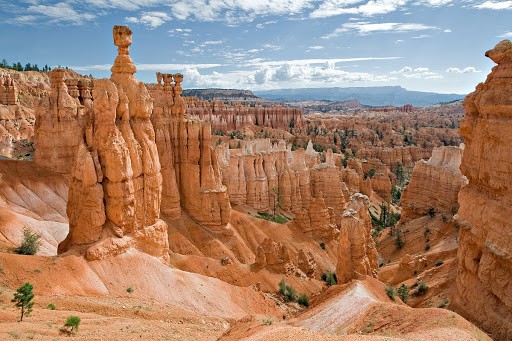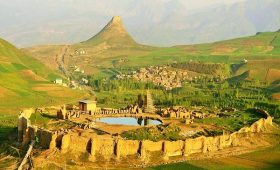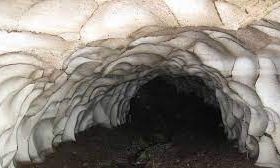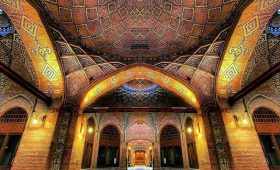Qeshm Geopark From Star Valley to strange rock formations and beautiful beaches, they have turned Qeshm Island into a paradise full of various attractions that affect every tourist. This island has many natural and pristine areas that are surrounded by the blue waters of the Persian Gulf and are in complete contrast to other parts of Iran. Cave, valley, forest and everything you expect from a beautiful nature can be found in Qeshm.
The existence of this diverse ecosystem has made Qeshm Island one of the world’s geoparks. Qeshm Geopark, that is considered as the first geopark in the Middle East in the global network of geoparks, was registered in Paris meeting in 1385 AH. This geopark, which is considered one of the sights of Qeshm, has a great importance among geoparks in terms of geological diversity, diversity in aspects of ecology, archeology, environment and wildlife and should be given more attention.
Qeshm Geopark is one of the sightseeing places of Hormozgan province, which is located in the west of the island. This area leads from the east to the village of Tabal and the village of Salekh, from the west to the village of Gori, from the north and south to the coast of the island.
Geopark is a program belonging to the Geosciences Department of UNESCO, which was formed with the aim of attracting the participation of the local community for the sustainable management and exploitation of a land, which leads to the preservation and maintenance of geological, natural and cultural heritage. In fact, geoparks are one of the best models for the sustainable coexistence of humans and the earth, and unlike other types of protected areas, they not only limit the entry and presence of visitors; Rather, they are designed for them; An issue that leads to the sustainable prosperity of local economies. Among the goals of geoparks, we can mention improving people’s knowledge about geosciences, attracting everyone’s participation in the protection and maintenance of geological heritage, etc.
The Global Geoparks Network was established with the support of UNESCO in 2004, and 17 geoparks from Europe and eight geoparks from China were its first members. The number of these geoparks reached 161 from 44 countries in the world by 2020, among which Qeshm Geopark is the only global geopark in Iran and the first geopark in the Middle East.
Qeshm is the largest island in the Persian Gulf with an area of 1,500 square kilometers. This beautiful island is located in the semi-tropical climate zone, the main vegetation of which includes kanar tree, mesquite and kerat. The very diverse and valuable nature, special habitats, rare animal and plant species, diverse geological phenomena, the beach all over the island, etc. have made it one of the famous attractions.
This island is located on the border of two completely different marine ecosystems, the Persian Gulf and the Sea of Oman, and this geographical location has created a unique biodiversity. In other words, the habitat conditions in these two aquatic ecosystems are not the same, and despite the fact that these two waterways are connected to each other through the Strait of Hormuz, they have significant differences in terms of biodiversity. The existence of different habitats in Qeshm, especially the coastal habitats, can be considered as one of the unique features of this island, the obvious examples of which are the types of coastal beds such as rocky, coral, sandy beds and mangrove forests that exist in the entire Persian Gulf. But in Qeshm Island, they are seen together.
The three ecosystems of coral beds, mangrove forests, and rainforests have the most animal and plant diversity in terms of biodiversity. The extent of mangrove forests in Qeshm is more than 100 thousand hectares; Although the extent of coral islands in the waters around Qeshm is not known exactly.
The tidal currents in the Persian Gulf have caused the tidal zone to become one of the most important ecosystems around the island; An area that is important in terms of biodiversity and abundance of species and is considered among the areas of interest for tourists.
The purpose of creating geoparks is protection, education and sustainable development, and their management plan is defined based on these pillars. In fact, UNESCO’s goal of creating geoparks is to turn these places into efficient centers for education, research and internships in various fields of earth sciences, so that they can be protected and exploited in the best and most appropriate way.
Qeshm Global Geopark, which was registered in 1385 AH, is one of the first geoparks in the global network. This geopark covers an area of 300 square kilometers from the west of Qeshm Island; Although the entire Qeshm island, the mangrove forests in the north of the island and the Hemaga island were added to this collection in May 2016. With the registration of the new area of Qeshm Geopark in the global network of UNESCO Geoparks, it is now considered one of the oldest geoparks in West Asia and the Middle East with an area of 2,063 square kilometers.
When international organizations support a geopark, they include it in their list and can help it financially, technically and by sending experts, and in return they expect the host country to spend its efforts in the care and maintenance of this area. to give An issue that should be paid more attention to Qeshm Geopark.
The geological, natural and cultural attractions of Qeshm Island have been introduced in the form of 25 geosites that are actively protected. From the geosites of Qeshm Geopark, you can go to Star Valley, Korkurakuh, Bam Qeshm, Valley of Statues, Shur Valley, Chahkoh Strait, Nemcdan, Karyan, Geopark Museum, Mudflats, Karag Beach, Ghazi Valley, Oli Strait, Basira, Chakvir, Naz Islands, Geo Link, Basaeido, Derestan Bay, Mangrove Forest, turtle nesting beach, crab rock, Laft village, Khorbes cave and Do Kohak bird wetland
.
Korkurakuh: This geosite, which is located in the east of Zahitadan village, has steep hills that have valleys and gorges that are known to smell bad due to the erosion of running water.
The Valley of the Statues: This valley, whose surface is often covered with mud cracks, is relatively similar to the Valley of Stars in terms of structure; But with the difference that it has more scope. In the Valley of the Statues, the stones here have been carved by erosion and turned into statues that have created a very beautiful landscape.
Chahkoh Gorge: This gorge is located in the southwest of East Chahovi village and it consists of two perpendicular gorges that dazzle the eyes of every viewer due to having very beautiful holes, seams and cuts. After every rain, a lot of water flowed in this place and people dug a well in the bottom of the gorge to use it, which is why it is called Chahkoh.
Namakdan Cave: This cave is one of the seven wonders of Qeshm… In Namakdan Cave, there is a large salt dome that houses the longest salt cave in the world.
Star Valley: This valley is located 15 kilometers away from Qeshm city and in the vicinity of Barke Khalaf village. Star Valley is outside the Qeshm Geopark; But its beauty and special geomorphological structure made it accepted by UNESCO as one of the main sites of Qeshm Geopark. The presence of volumes such as needle-shaped columns, completely vertical walls, numerous holes are among the beauties of this valley.
Bam Qeshm: Bam Qeshm is located in the central part of Qeshm Island and has a height of more than 120 meters, and as a result, from its top you can watch a wonderful view of the north and south coast of the island, the mangrove forest and the valley of statues.
A rock with a strange shape created by erosion
Dere Shoor: this gorge, which is also called Makineh or Hobad gorge; The oldest sedimentary layers of the island (Guri limestone) can be seen there. Also, the highest peak of the island with a height of about 400 meters overlooks this valley. The presence of thousands of beautiful waterways on the slopes of the valley and the hills of marl and limestone in the middle, as well as the sulfur springs that have given the valley a wonderful appearance, are some of the charms of this valley. Interestingly, sulfur springs have healing properties and attract a large number of natives of the region to them every year.
Mangrove forest: The mangrove marine forest with an area of 200 square kilometers is located in Khoran Strait between Qeshm Island and Khamer Port. This forest, which is considered one of the natural wonders on the island, consists of a lot of trees, some of which are submerged in water. These trees are 3 to 6 meters in size with bright green leaves that sink up to 90% in water during high tide.
Qeshm World Geopark Museum, which started its activity in 1384 AH in an area of over 1000 square meters, is a great place to watch the world’s smallest and largest mammals. Weighing two grams, the pygmy insectivore is the smallest mammal on earth that can give birth and nurse its young. Whales are the largest mammals in the world, for example, the length of the humpback skeleton, which is kept in the museum, reaches 15 meters.
In this museum, all kinds of birds are also exposed to visitors. From the small nectarine, which is considered one of the smallest birds in the world, to birds such as the gray-footed pelican, which are in danger of extinction, can be seen in this museum.
In addition to more than 300 species of animals, you can also visit the collection of stones and shells that are located in the paleontology section. Interestingly, some of the geological attractions of the island are designed in the form of small replicas. Among these replicas, we can mention the world’s longest salt cave, as well as the nesting site of eagle-nosed turtles, the sandy beach, and Bam Qeshm.
In this museum, you can see signs of the presence of early humans in Qeshm Island to contemporary handicrafts and the environment. Perhaps the most interesting part of the museum is the three-dimensional and natural replica of Qeshm, which includes all the geographical and morphological details of the island.
A part of the museum is dedicated to the handicrafts of the island, including local women’s clothes, types of needlework, khosdozi, glabton embroidery, carpets, wood crafts, marine crafts and local instruments of the island such as oud, tambourine, dahl, etc.




